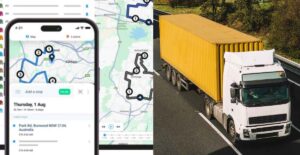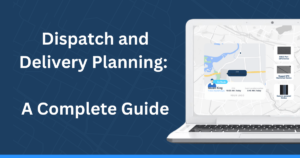“Reusable packaging and cold chain products within delivery networks face major obstacles due to the lack of oversight, multiple handoffs, and complex reverse logistics.”
Industry expert Alex Rand believes this is a complex challenge the grocery delivery sector is currently grappling with.
Rand is a dedicated operational strategist with over 10 years of experience in e-grocery fulfillment. His ideas and strategies have helped many companies with equipment, applications, and fulfillment methods.
He recently posted his experience with grocery delivery from Amazon on social media, expressing his concern about the packaging material. Some of the food was “packed in rugged, foil-lined paper bags,” while frozen items had “additional layers of paper insulation.”
But this didn’t sit well with him. “Are these measures truly effective in maintaining the cold chain during transit,” he wondered. Are these “excess packaging” necessary, or could there be a more sustainable and cost-effective way to deliver cold chains to the doorstep?
Is grocery gig delivery efficient?
Rand believes grocery gig delivery has not reached its “optimal efficiency” for drivers and grocers. “The gig economy, composed of 1099 independent contractors (in the US), lacks the authority to enforce the use of specific tools such as insulated totes or passive coolant to extend [the] cold chain.”
But turning to the customer side, the “dynamics are different,” recons Rand.
Single-use bags for customers
“In my home state of Maine, there’s only one Whole Foods Market. They travel great distances to maximize delivery coverage and store utilization.” Rand says that although this is an easy way to reach people in far-flung areas, there are three losers at the end of the day. “It comes at a significant cost to the retailer, the contractor, and the environment.”
In a more suburban setup, gig delivery drivers make more frequent trips with small orders to maintain the cold chain. The main aim is to get gig drivers to deliver orders in under 30 minutes. “But enforcement is often left to the discretion of the contractor and store employees,” Rand says could leave grocery drivers on the road for far longer.
Optimizing gig drivers’ time
“Now, imagine a game-changing scenario… completely remove the cold chain barrier and have the vehicle govern the number of orders the driver can claim,” says Rand.
Route optimization software has the ability to optimize gig drivers’ time, use less fuel, and lower the time spent on the road.
NOW READ: Route Optimization Frustrates Customers! Boost The Delivery Experience
About the author
Mia is a multi-award-winning journalist. She has more than 14 years of experience in mainstream media. She's covered many historic moments that happened in Africa and internationally. She has a strong focus on human interest stories, to bring her readers and viewers closer to the topics at hand.












